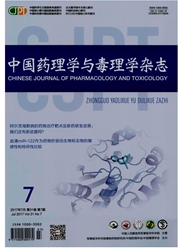

 中文摘要:
中文摘要:
离子通道是细胞膜和细胞器膜等生物膜上一类允许离子通透的蛋白质。许多离子通道,如大多数钠通道、钾通道、钙通道和部分氯通道受电压门控调节,这些电压门控离子通道具有广泛的生理功能。人参皂苷是中药人参、西洋参和三七等五加科人参属植物的主要活性成分,包括Ra1,Ra2,Rb1,Rb2,Rb3,Rc,Rd,Rg3和Rh2等原人参二醇,以及Re,Rf,Rg1,Rg2和Rh1等原人参三醇等。本文综述了人参皂苷多种成分对各种电压门控钠通道、钾通道、钙通道和氯通道的不同作用特点及可能的机制,提示人参皂苷多种成分不仅能直接作用于电压门控离子通道,还可以通过G蛋白和一氧化氮等信号通路途径,间接影响电压门控离子通道功能。
 英文摘要:
英文摘要:
Ion channels are pore-forming proteins that allow the flow of ions across,either plasma membranes or those of intracellular organelles. Many ion channels,such as most of the Na,K,Ca and some Cl channels,are gated by voltage and play vital roles in a wide range of physiological functions.Ginsenosides are main active components of Chinese herbs including Panax ginseng( Radix Ginseng),P. quinquefolium,P. notoginseng and other Araliaceae species. The chemical components of ginsenosides include protopanoxadiols Ra1,Ra2,Rb1,Rb2,Rb3,Rc,Rd,Rg3 and Rh2,and protopanaxatriols Re,Rf,Rg1,Rg2 and Rh1. This review summarizes the detailed characteristics of the effect of ginsenosides and their metabolites on voltage-gated sodium,potassium,calcium and chloride channels while discussing their underlying mechanisms. The conclusion is that different ingredients in ginsenosides could regulate the function of the voltage-gated ion channels not only via direct interaction with ion channels,but also through the G-protein or nitric oxide signaling pathway.
 同期刊论文项目
同期刊论文项目
 同项目期刊论文
同项目期刊论文
 期刊信息
期刊信息
